Pulse Room(2006) – Rafael Lozano-Hemmer
Introduction
In this hyperessay, I would be elaborating on Rafael Lozano-Hemmer’s interactive artwork – Pulse Room. I will be briefly covering on the artist and artwork overview. Subsequently, I would further elaborate on the artwork in relation to the concept of interactivity, new media practice and in comparison to historical context.
Artist Overview

Rafael Lozano, previously from a science chemistry major background is now a Mexican-Canadian installation artist. In most of his installations, he involves technologies such as robotics, telematic networks, and computerized surveillance. His works usually combine technology, performance, architectures, sound, and light to create interactive art installations that aim to engage public’s participation. He is also interested in using technology to amplify people’s presence in the urban scale. His projects focus a lot on promoting the interaction between real and virtual structures in various timeframes. Some of which, allow people to reconstruct certain ideas and get in touch with the idea of intimacy. Most of his work is done in public spaces. More recently, he started to move towards creating installations within the museum (Hemmer, R. L. (n.d.)).
Art Work Overview
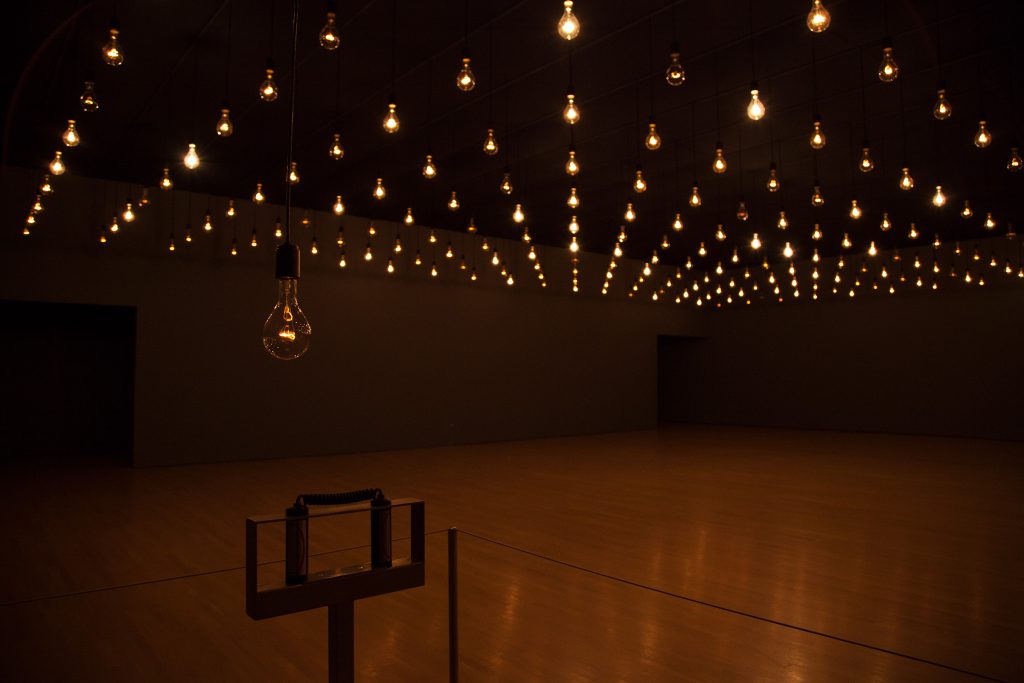
I have come across Pulse Room and was intrigued by the concept of using visuals such as lights to represent the kinetic palpitation of the heart which is something that is usually only be felt or heard. After reading briefly about it, I felt that this piece is quite relevant to the concepts of interactivity that has mentioned during lesson. Hence I have chosen this piece as my selected artwork.
It is an interactive art inspired by Macario, directed by Roberto Gavaldón in 1960, a film that features the protagonist suffering from a hunger-induced hallucination and that each person is represented by a lit candle in a cave.
It consists of 100-300 light bulbs 300W each hanged by cables that are 3 meters above the ground. In a dark room, bulbs filled up the entire room in a consistent manner. There is a sensor metal bar placed in the room before the field of light bulbs. It recognizes and traces the heart rate of the participants. After which, the pulse is detected by the computer will be transmitted to the closest bulb in front of the participant/sensor that is hanged slightly lower approximately 1.7m above the ground, replicating the rhythm of the heart palpitation in the form of flashing light. After registering the palpitation rhythm, the whole room went dark briefly and the recorded flashing light palpitation goes forward by one position down the queue. Each time a new participant touches the sensor, the new palpitation pattern will push ahead the existing ones, showing the most recent palpitation pattern. All the way till it is out of the sequence and dissipates (Merete C, Ulrik S, 2012).



Techniques & medium used:
Incandescent light bulb
Voltage controller
Heart rate sensors
Computer
Metal sculpture sensor stand
DMX circuit board
Dimmer packs
(Hemmer, R. L. (n.d.))
Collaborated with:
Programmer–Conroy Badger
Production support–David Lemieux, Natalie Bouchard, and Pierre Fournier
Technicians
(Hemmer, R. L. (n.d.)).
The rationale and idea behind this installation are to explore the concept of our existence and the meaning of life. Every individual is being represented by a light bulb that is uniquely flashing in the rhythm of heartbeat that only belongs to the individual. As it progresses, the room is filled with many people’s heartbeat, which represents a community. As time past, each individual’s initial pulse will eventually be gone and being replaced by the new participant’s heartbeat. The artist wanted to make use of technology and different medium of light and kinetic to allow the participant to make their own connection and interpretation of this piece (C.A., 2014).
Personally, I find this artwork very impactful as it closely mimics the cycle of life. How we are born into this world and slowly lost and immerse ourselves in our hectic everyday life with the others. Eventually coming to an end without noticing and is being replaced by “new lives”. It makes me reflect and ponder a lot.
In Relation To Interactivity
Cybernetics–The balanced two-way communication/relationship between human and machines. In this case, of how human sending a pulse message to the machine(sensor > computer > light bulb). How the machine received the message, reacted and replied by recording and translate to light flashing rhythm for the viewers to reflect upon this entire artwork.
Entropy & Indeterminancy–chaos & unpredictability. In this case, the chaos and unpredictability would be in terms of different people have different rhythm heartbeats which resulting unpredictability of the end result of the pool of light bulbs that flashes in a chaotic rhythm.
Behavioral Art– having the involvement of visitors/participants changes the artwork and audience is no longer passive. In terms of Pulse Room, without human participating and being part of the artwork, the artwork will not exist as the entire room will be dark. With no human, there is no pulse. With no pulse, there is no translation of heartbeat to flashing lights. With no lights, it is like any other room which defeats the purpose of having an installation. Installation is hence non-existence.
Reactions(Physical, Emotional, Conceptual)– In terms of Pulse Room, it involves all three reaction elements. Physically visitors are engaged by the sense of touch of the sensor to have a feel of transmitting heartbeat rhythm to the sensor. They are also visually engaged and immersed in watching their own pulse and being amidst in the room of flashing lights. Emotionally it allows participants to feel intimate and mesmerized by the environment. Conceptually, it allows viewers to question about life and relate to the intended message of what the artworks wished to convey – the cycle of life and how we often get lost in the midst of being busily engaged in life and with others. Therefore, all of the above factors above constitute to interactivity.
Quotes from Roy Ascott, “Behavioral Art and the Cybernetic Vision,” 1966 :
“Each artwork becomes a sort of creative tarot pack, presenting coordinates which can be endlessly reshuffled by the spectators, always to produce meaning.” – Roy Ascott
I find this analogy from the readings really interesting, on point and relatable. Artworks have taken up the role as a facilitating/reflecting tool like a tarot card. A picture that could be interpreted in a thousand meanings by different people in different situations that pays attention to the different aspect of life. At a different time, with different people or location, the same artwork produces different meaning. Both artwork and audiences correlate with each other as the artwork provides a facilitating role while the audiences give the artwork its meaning.
“We are moving towards a fully cybernated societywhere processes of retraction, instant communication, autonomic flexibility will inform every aspect of our environment. In that forming society, of which we are a part, the cybernetic spirit finds its expression in the Human Scienceand in Environmental Technology; the two poles between which we act out our existence. It is the spirit of our understanding of life at its simplest and most complex levels, and a large measure of our ability to control it.” – Roy Ascott
This paragraph is also interesting in the sense that it tells us that cybernetics is not just the balance relationship between human and technology. It is also related to our environment and society that shapes us as who we are. It allows us to further understand about ourselves.
Quotes from Rafael Lozano interview, “Exhibition of MCA” 2012, and “Open Air“, 2012 :
” It is only through the activation of the public that the project exists in the first place” – Rafael Lozano
I find that this quote by Rafael is very relevant to the concept we have mentioned in class about behavioral art only exist when audiences participate and become part of the artwork.
” What I talk about is relational specific, so my works try to establish constraints which are developing a performance on a particular site of space that is portable, as it lands at another place, the public reaction could create another piece. Hence the outcome of not knowing what’s gonna happen”– Rafael Lozano
From this quote, we can also see how much Rafael values Entropy and Indeterminacy.
“My work often uses technologies, not because its something that’s new, original or futuristic. But rather precisely its natural because it’s inevitable. “– Rafael Lozano
This quote shows exactly how Rafael as an artist values the ideology of accepting technology as a part of us and it is something that is inevitable. Which is part of his rationale on why his artwork consists of technologies to begin with.
In Relation To New Media Practice, Integration & Interdisciplinary
Before I begin the essay, I have researched about what is new media. There are quite a few definitions coming up. Some define it as a many to many communications, the use of new technologies such as VR, internet, mobile device, hypertext, email, blog etc. While some define it as using new media like human-computer interface, interactive computer installation etc in contrast to old media platform such as books, magazines, TV that only allows one-way communications. Which is very unspecific.
After looking through the reading, Rethinking Curating by Beryl Graham and Sarah Cook, they refer to new media as a terminology that is yet to be able to be defined specifically as it is something debatable due to the ever-changing society. The readings mentioned New Media could be seen from different perspectives. In the context without art, it usually refers to commercial broadcast. In the context of art, some draw a line between art and technology while another school of thoughts was supporting the idea of media/digital art. Personally, I agree very much with the authors that it is difficult to define it. In my opinion, I felt that anything that uses advanced technologies of that period in time that we are living in and is a two-way communication would be my definition of New Media. While New Media Art could be any art form, usually installation, that uses new technology to create two-way communications between human together with new technology that is aesthetic or with impactful messages that leave visitors to ponder.
In the context of my selected artwork, the artist demonstrates the integration of art and technology through using computer programming interphase. The computer is used to receive the pulse fluctuating signals from the metal bar sensor. It is also used to control every single light bulb in the room. Data is updated through USB connection to a DMX circuit board. The DMX circuit board sends signals to dimmer packs where the bulbs are. There are two cables one of which boots up the computers and sensors while the other translate signals to the dimmer pack which determine the amount of power that goes to the bulb. The artist made use of technologies to translate heartbeat rhythms into a room full of beautiful blinking lights that are aesthetically pleasing that conveys meanings that allow the audience to think about (Hemmer, R. L., 2010).

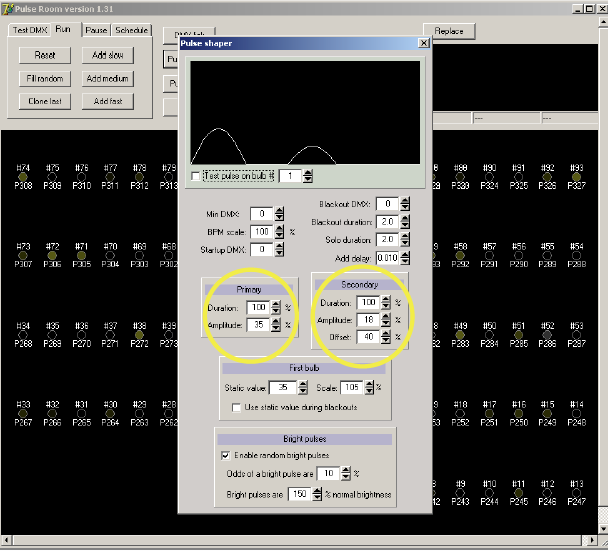
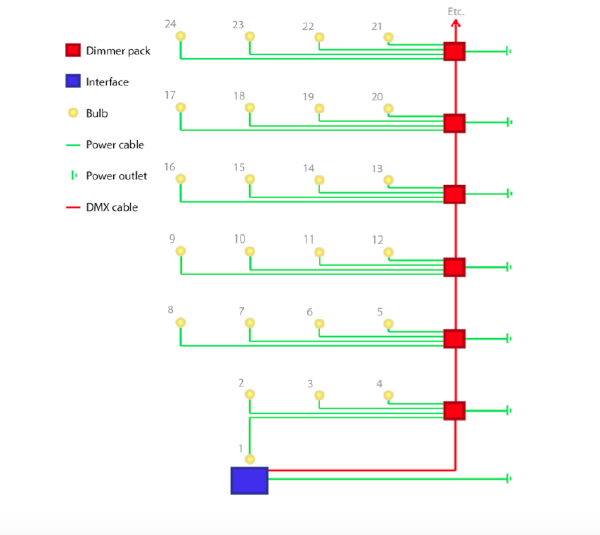
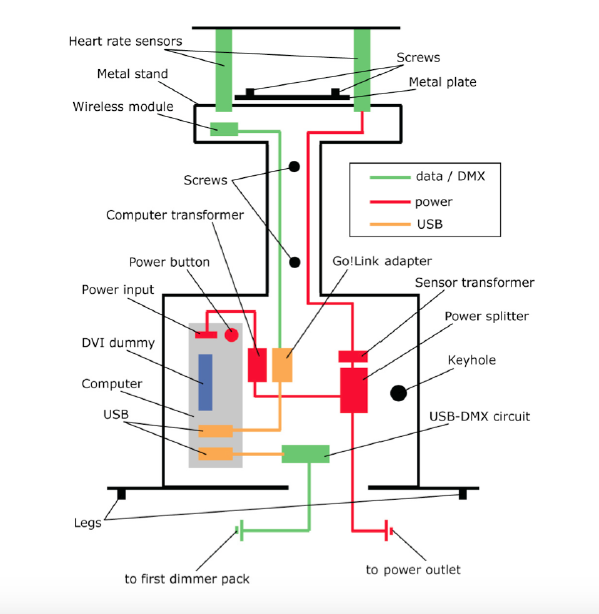
Rafael Lozano has also worked with professionals of other disciplinary such as programmer Conroy Badger, to create the interphase of setting up and controlling the light bulbs. Technicians were also involved to complete the artwork by helping out in setting up the light bulbs, cables with precisions of distance and height with safety awareness.
In Comparison To Historical Art Work
(Nam jun park, Magnet Tv)
Pulse Room is actually quite similar to one of the historical work Magnet TV by Nam Jun Park. Both Pulse Room and Magnet Tv requires visitors to participate and be a part of the artwork installation. If none of the visitors participate, both the artwork installation would stay still, incomplete and non-existent. In terms of Magnet TV, it would just be a still piece that seems like a normal magnet placed on top of a TV just like any others that we have seen before. Nothing meaningful about it, as the image of the screen is not altered, it is not even an interactive installation artwork anymore. Similarly, in Pulse Room, if there is no participant, there will not be any activator and the room will be just like any plain dark room with light bulbs that are not “working”. Hence both works become non-existent.
Therefore, the involvement of human participation does not just give life to the work itself. Human is the one that creates and gives meaning and interpret the meaning to the artwork. In such a context, human is an important part of the work and both technology artwork, and human needs to coexist in order to build add-on meanings on to each other forming the concept of cybernetics together. Whereby, there is a balanced two-way form of relationship and communications existing. Similarly, both artwork is rather unpredictable as different people have a different rhythm heartbeat and different combination forming all the light flashing in the rooms will be different everytime someone adds on too. Same for Magnet TV, different people manipulate the magnet differently resulting in different patterns outcome.
However, despite both artwork explored the human relationship to art and machines. They differ in their concepts and ideology behind their artworks. In terms of Magnet Tv, Nam June Paik is trying to reflect the relationship of human with technology and its effects or benefits on us in the modern days whereby technology is advancing. Believing technology could enhance the communications between cultures. Meanwhile, for Rafael Lozano, he stresses the fact that technology is inevitable, and that we should embrace it and intimacy could be shown through technology. Both artists have very different takes in regards to cybernetics.
” I reject that technology is a tool or something we can use, it is rather something that forms part of us.” – Rafael Lozano
Again this quotes shows Rafael’s values.
Conclusion
I felt that both Rafael Lozano as an artist and his art installation Pulse room did expand the idea of interactivity art. Pulse Room shows us another side of interactive installation whereby using technology to create installations is not necessarily having it to solely revolve around the concept of exploring how human relations with technology are like or how technologies are advancing etc.
Having new media technology being integrated with art and interactivity could be as intimate, personal and relatable to the public. He also expands on the idea of accepting technology as a part of us as a way of life like any other norm that is inevitable. Promoting the spirit of appreciation and acceptance, allowing technology and art to connect with us intimately and vice versa.
To end off the hyperessay, I would also like to mention that there are other similar works from the same biometric series as pulse room that is worth taking a look at.
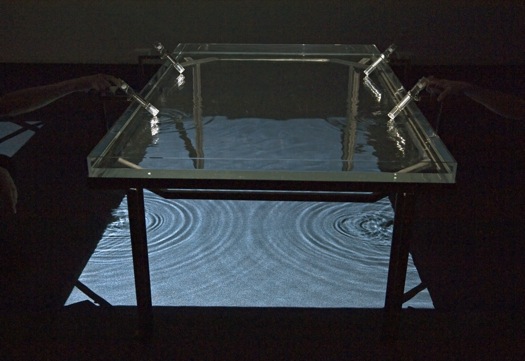
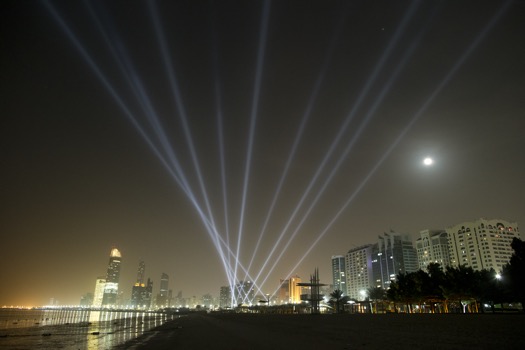
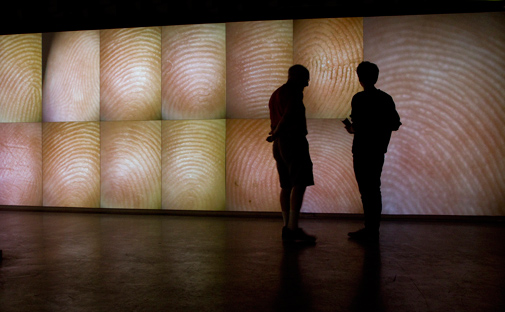
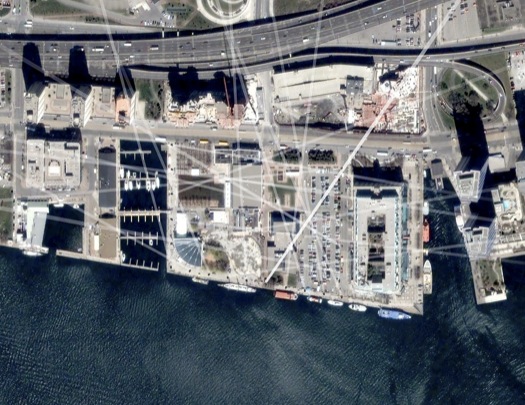


Bibliography
Claudia, A. (2014). Connecting Realities: Rafael Lozano-Hemmer’s Pulse-based Works. Journal Of Science And Technology Of The Arts, Vol 6, Iss 2, Pp 21-28 (2014), (2), 21. doi:10.7559/citarj.v6i2.117
Graham, B., & Cook, S. (2010). Rethinking curating : art after new media. Cambridge, Mass. : MIT Press, c2010.
Hemmer, R. L. (n.d.). Pulse Room. Retrieved August 31, 2018, from http://www.lozano-hemmer.com/pulse_room.php
Hemmer, R. L. (2010). Pulse Room. Pulse Room. Retrieved September 8, 2018, from http://www.lozano-hemmer.com/texts/manuals/pulse_room.pdf
Johung, J. (2011). Networked Dependencies: Rafael Lozano-Hemmer’s Relational Architecture. University of Minnesota Press. doi:10.5749/minnesota/9780816672875.003.0005
Merete C, Ulrik S. Pulse on pulse: modulation and signification in Rafael Lozano-Hemmer’s Pulse Room. Journal Of Aesthetics & Culture, Vol 4, Iss 0, Pp 1-7 (2012) [serial online]. 2012;(0):1. Available from: Directory of Open Access Journals, Ipswich, MA. Accessed September 7, 2018.
Neumann, C. E. (2015). Nam June Paik. Salem Press Biographical Encyclopedia
R. A. (2002). Multimedia From Wagner to Virtual Reality, Behaviourist Art and the Cybernetic Vision(Vol. 11). United States of America: Norton Paper Back. Retrieved September 8, 2018, from http://proteus.fau.edu/practicum/texts/ascott.pdf

